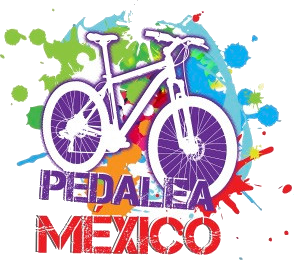Before visiting Mexico City, I wasn’t sure what to expect.
Is it safe?
Is it overwhelming, chaotic, dirty?
Will I feel lost or even at risk?
Like many travelers, I had only seen the headlines. Crime statistics. Overpopulation. Traffic. What I hadn’t seen were the thousands of quiet, beautiful moments that happen here every day—moments that changed everything I thought I knew.
Because here’s the truth:
Nothing prepared me for how stunning, welcoming, and deeply cultural Mexico City would be.
A City That Breathes History
You don’t just walk through Mexico City—you walk through centuries.
Every neighborhood, every block holds traces of the past: pre-Hispanic ruins, Spanish colonial mansions, Art Deco buildings, modern street murals. The city is literally built on top of ancient Tenochtitlán, the capital of the Mexica (Aztec) empire—one of the most sophisticated urban centers of the ancient world. At its peak, it had a population larger than many European cities of the time, complete with canals, floating gardens (chinampas), vast marketplaces, and towering pyramids that impressed even the Spanish when they arrived.
Today, in the Centro Histórico, you can visit the Templo Mayor, an actual sacred site dedicated to Huitzilopochtli and Tlaloc, two of the most important deities in the Mexica pantheon. The massive stone remains sit just steps from the grand colonial Metropolitan Cathedral, built from the very stones of the destroyed temple. It’s not just a visual contrast—it’s a powerful, symbolic reminder of what was lost, what survived, and how both pasts coexist in the daily rhythm of the city.
And it’s not limited to the center: throughout the city, you’ll find vestiges of pre-Hispanic civilizations—teotihuacano, mexica, tolteca, olmeca, and more. This is not just a modern city: it is layered with ancestral memory, a living archive of Indigenous knowledge, architecture, and cosmology that still pulses beneath the surface.
A Cultural Powerhouse
In one week, I visited more museums than I have in some European capitals. Mexico City has over 150 museums, countless galleries, cultural centers, and public art spaces. The city is bursting with art, music, performance, and living history—and it’s not only preserved in institutions but lived in everyday life.
The National Museum of Anthropology is world-class. Its architecture alone is breathtaking, but the collection—ranging from colossal Olmec heads to the Aztec Calendar Stone and Mayan stelae—is a journey through millennia of Indigenous civilizations. Each hall is like entering a different universe, from the highland temples of the Mexicas to the jungles of the Maya.
The Frida Kahlo Museum (La Casa Azul) in Coyoacán offers an intimate, emotional experience. You don’t just see her paintings—you walk through the house where she was born, lived, suffered, and created. It’s a deeply personal portal into Mexico’s most iconic female artist.
For modern and contemporary art lovers, Museo Tamayo, Museo de Arte Moderno, and Museo Jumex house works by Mexican and international artists that challenge and inspire. You’ll find bold installations, surrealist pieces, political commentary, and digital art—all in striking architectural spaces.
There’s even art in the subway stations—murals, stained glass, bronze sculptures, entire photo exhibits and poems. Culture here isn’t hidden behind velvet ropes—it rides with the people.
But it doesn’t stop at museums. Culture spills out into the streets: Outdoor concerts and dance performances in public squares are common; Book fairs, artisan markets, and film festivals are always popping up; Community theaters perform original plays or reinterpret classics for local audiences; Food vendors serve recipes passed down through generations—tamales, tlacoyos, atole, mole, each dish a piece of edible history.
You can also visit the Palacio de Bellas Artes, an architectural jewel, where ballet folklórico, opera, and classical music meet under a Tiffany stained-glass curtain. Or wander the Biblioteca Vasconcelos, a cathedral of books suspended in space, free and open to all.
Culture here isn’t reserved for elites. It’s in the streets, in the plazas, on your plate. It’s ancient and avant-garde. It’s for everyone.
Lucrecia Pearson
Pedalea Mexico bike tours & experiences owner
Is It Safe?
This is the question on everyone’s mind—and it’s fair to ask. Mexico City is enormous, and like any big city, it has its challenges. But the truth is:
Many areas of the city are absolutely safe to visit and explore.
Neighborhoods like Coyoacán, Roma, Condesa, Polanco, San Ángel, and even much of the historic downtown during the day are clean, walkable, and filled with security, families, tourists, and locals going about their lives.
I took Ubers, walked alone, explored museums, ate in street markets—and never once felt in danger. Caution is always wise, but fear shouldn’t stop you from discovering this place.
And yes—you can take the metro, too.
It’s incredibly cheap, fast, and connects you to almost every corner of the city. If you avoid rush hours (typically 7–10 AM and 5–8 PM), it’s not just safe but surprisingly smooth. Trains run frequently, many stations are clean and well-lit, and it’s often a more efficient option than taxis or ride-shares during traffic hours.
The People: The Best Part of All
I expected a big, impersonal city. What I found was a deep sense of kindness.
Chilangos—as locals are lovingly called—are friendly, open, and often go out of their way to help. Whether you’re lost in a market or unsure what to order, someone will step in with a smile.
There’s an emotional generosity here that’s hard to explain. It’s not flashy. It’s just real.
So… Should You Go?
Absolutely. Yes. Go.
If you’ve been doubting, worrying, wondering…
If you’ve heard the warnings and read the news…
Let me tell you something honest:
Mexico City will surprise you.
Not because it’s perfect—but because it’s powerful.
Because it’s alive. Because it will stay with you long after you leave.

